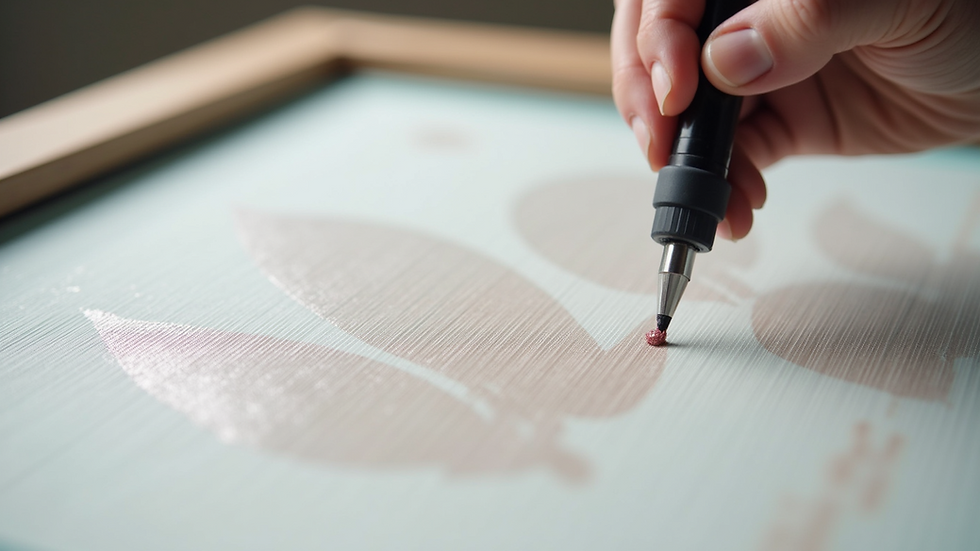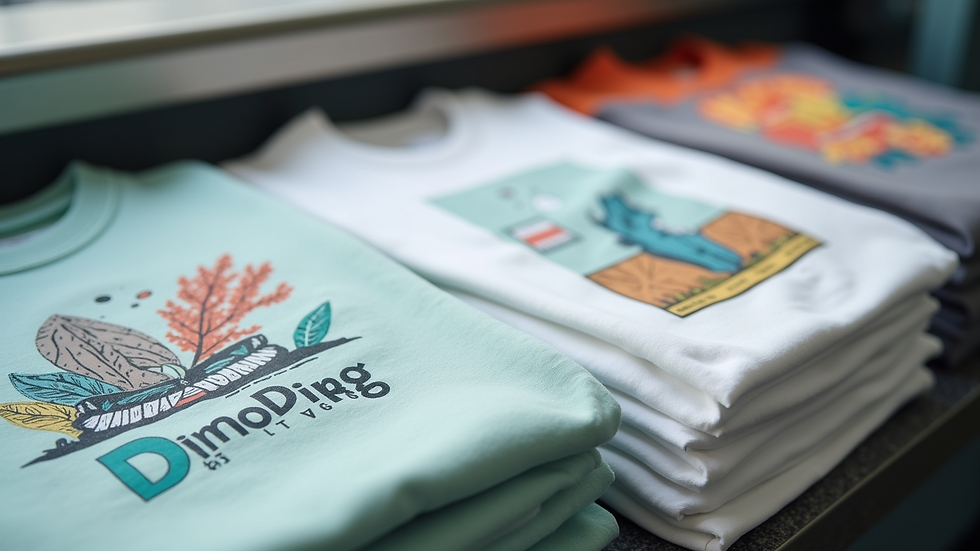Exploring Effective Screen Printing Services
- inbox7097

- Aug 8
- 4 min read
When it comes to customizing apparel or promotional items, screen printing remains one of the most popular and reliable methods. I’ve always been fascinated by how a simple mesh screen and some ink can transform a plain t-shirt into a vibrant piece of art. Whether you’re a business owner, an artist, or just someone looking to create personalized gear, understanding screen printing techniques can make a huge difference in your final product.
Let’s dive into the world of screen printing and explore how you can get the best results with effective methods and smart choices.
Understanding Screen Printing Techniques
Screen printing is a process where ink is pushed through a mesh screen onto a surface, usually fabric. The areas that don’t get ink are blocked off by a stencil or emulsion. This technique allows for bold, vibrant colors and durable prints that last through many washes.
There are several screen printing techniques, each suited for different needs:
Traditional Screen Printing: This is the classic method where each color requires a separate screen. It’s perfect for bulk orders with limited colors.
Discharge Printing: This technique removes the dye from the fabric and replaces it with ink, resulting in a soft, vintage look.
Water-Based Printing: Uses water-based inks that soak into the fabric, giving a softer feel compared to plastisol inks.
Plastisol Printing: The most common ink type, plastisol sits on top of the fabric and offers vibrant colors and durability.
Specialty Techniques: Including puff inks, metallic inks, and glow-in-the-dark inks for unique effects.
Choosing the right technique depends on your design, fabric type, and budget. For example, if you want a soft feel on a dark shirt, water-based or discharge printing might be your best bet.

How to Choose the Right Screen Printing Technique for Your Project
Picking the right screen printing technique can feel overwhelming, but it’s easier when you consider a few key factors:
Design Complexity: If your design has many colors or gradients, traditional screen printing might be costly and time-consuming. In such cases, digital printing or specialty inks could be better.
Fabric Type: Cotton works well with most inks, but synthetic fabrics might require specific inks like plastisol.
Quantity: Bulk orders benefit from traditional screen printing because the setup cost is spread out. For small runs, water-based or digital methods might be more economical.
Feel and Finish: Do you want a soft print or a raised, textured effect? Water-based inks offer softness, while puff inks add texture.
Durability: Plastisol inks are known for their longevity, making them ideal for items that will be washed frequently.
By weighing these factors, you can select a technique that balances quality, cost, and appearance. Don’t hesitate to ask your printer for samples or advice—they often have valuable insights based on experience.

The Benefits of Professional Screen Printing Services
While DIY screen printing can be fun, professional screen printing services offer several advantages that are hard to beat. For starters, they have the right equipment and expertise to handle complex designs and large orders efficiently.
Here’s why I recommend using professional screen printing services:
Quality Control: Professionals ensure consistent color matching and sharp details.
Speed and Efficiency: They can complete large orders quickly without sacrificing quality.
Access to Specialty Inks: From metallic to glow-in-the-dark, they offer a variety of ink options.
Durability: Their prints last longer because they use high-quality inks and curing processes.
Customization Options: They can print on various materials beyond t-shirts, like bags, hats, and posters.
If you want your project to look polished and last, investing in professional services is a smart move. Plus, it saves you time and frustration.

Tips for Preparing Your Design for Screen Printing
Getting your design ready for screen printing is crucial to achieving the best results. Here are some practical tips I’ve learned along the way:
Use Vector Graphics: Vector files like AI or EPS ensure your design stays sharp at any size.
Limit Colors: Each color requires a separate screen, so fewer colors mean lower costs.
Simplify Details: Tiny details might not print well, so keep your design bold and clear.
Choose the Right Colors: Remember that colors may look different when printed, especially on dark fabrics.
Provide High-Resolution Files: If you’re using raster images, make sure they are at least 300 dpi.
Communicating clearly with your printer about your design and expectations can prevent costly mistakes. Many printers offer design services or consultations, so take advantage of their expertise.
Making the Most of Your Screen Printing Project
Once you’ve chosen your technique and prepared your design, it’s time to think about how to maximize the impact of your screen printing project. Here are some ideas:
Brand Your Business: Custom apparel with your logo can boost brand recognition.
Create Team Uniforms: Screen printed shirts unify groups and promote team spirit.
Design Event Merchandise: Unique prints make great giveaways or souvenirs.
Personal Gifts: Customized prints add a personal touch to gifts for friends and family.
Promote Causes: Use screen printing to spread awareness with eye-catching designs.
Remember, the quality of your print reflects on your brand or message. So, investing in good materials and professional services pays off in the long run.
Screen printing is a versatile and rewarding craft that can bring your ideas to life in vibrant color. Whether you’re printing a few shirts or thousands, understanding the techniques and options available helps you make informed decisions. And if you want to ensure the best quality and durability, consider partnering with expert screen printing services that can guide you through the process.
Ready to start your screen printing journey? With the right knowledge and resources, your designs will stand out and make a lasting impression!




Comments